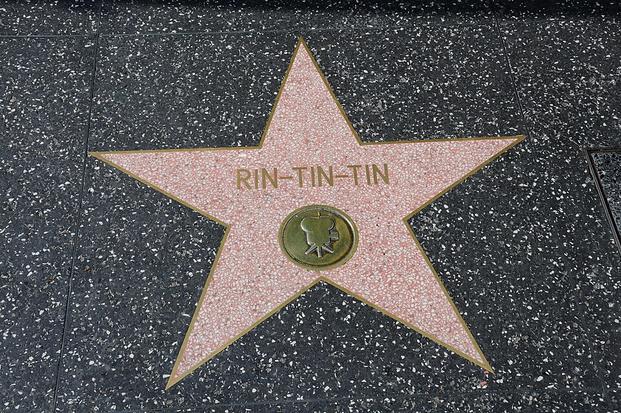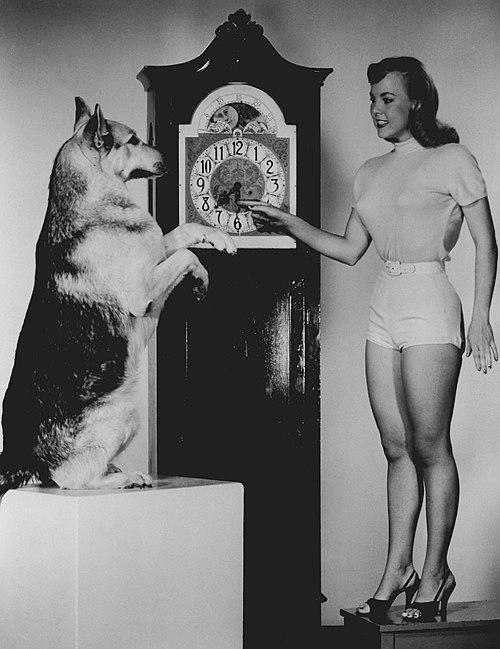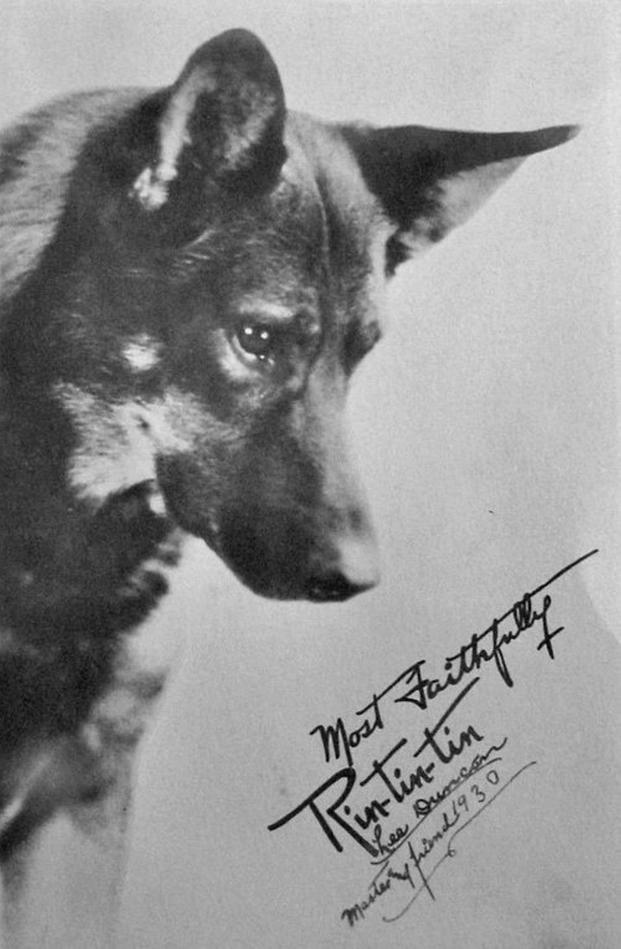On Sept. 15, 1918, Corporal Lee Duncan walked through the bombed-out ruins of a German camp near Flirey, France. There, he found a kennel that housed military-working dogs meant for the German army. Most were dead, but he discovered a starving German shepherd mother with her litter of five newborn puppies. Their eyes hadn’t even opened yet.
Duncan had no idea that one of those puppies would soon become the face of Hollywood and save a then-unknown film studio called Warner Bros. from bankruptcy.
WWI Soldier Rescues a Battlefield Puppy
Born in 1892 into a poor family in California, Duncan’s father abandoned the family soon after. In 1898, his mother placed him and his sister in an orphanage, unable to support them. He spent five years there before his mother was able to retrieve them.
Due to his upbringing, Duncan jumped at the opportunity to join the military when the U.S. entered World War I. He was one of the first Americans sent to France in late 1917 with the U.S. Army Air Service’s 135th Aero Squadron.
He took part in numerous engagements for the last year of the war, including the bloody Battle of Saint-Mihiel. Following the engagement, he was sent forward to survey whether the small French village would make a suitable location for his unit’s airplanes. There he found the abandoned dogs; he knew he couldn’t leave them behind. With help from a friend, he rescued all six animals and brought them back to his unit’s camp.
Duncan gave the mother and three of the litter to his fellow soldiers. He kept two for himself — a male and a female — he named them Rin Tin Tin and Nanette after small yarn dolls that French children handmade and gave to American soldiers as good luck charms.
When the war ended in November 1918, Duncan convinced his commanding officer to help him smuggle both dogs aboard the ship returning to the United States. Once stateside, Duncan stopped in New York and found a German shepherd breeder, Mrs. Leo Wanner, who agreed to temporarily care for the dogs.
Unfortunately, Nanette contracted pneumonia and died in July 1919 despite the breeder’s care. Wanner gave Duncan a replacement female puppy from her own litters, which he named Nanette II. Duncan traveled with Rin Tin Tin and the new puppy to his home in Southern California by train.
German Shepherd Breaks Paw But Becomes Hollywood Star
Back in Los Angeles, Duncan worked at a high-end sporting goods store and devoted his free time to training Rin Tin Tin. The German shepherd proved remarkably athletic and intelligent. In 1922, Duncan helped found the Shepherd Dog Club of California and entered Rin Tin Tin in the club’s first show.
At the competition, Rin Tin Tin demonstrated his skills by scaling an 11-foot, 9-inch wall, winning the jumping competition and wowing the crowd. However, disaster nearly ended his career before it began. On the way home, a heavy bundle of newspapers fell from a delivery truck and landed on the dog, breaking his left front paw. Duncan had the limb set in plaster and nursed Rin Tin Tin back to health over nine months.
During one dog show performance, Duncan’s friend tested out a new slow-motion camera by filming Rin Tin Tin’s jumps. He then encouraged Duncan to get Rin Tin Tin into the movie business.
“I was so excited over the film idea that I found myself thinking of it night and day,” Duncan later admitted.

A German Shepherd Saves Warner Bros.
In 1922, Duncan began walking the dog up Hollywood’s Poverty Row, begging fledgling studios to give the war orphan a chance. They eventually encountered a Warner Bros. film crew struggling with an uncooperative wolf for a film called “The Man from Hell’s River.”
The crew relented and allowed Rin Tin Tin to shoot a scene, where he did the shot in one take with Duncan’s assistance.
Duncan then wrote his own screenplay specifically for Rin Tin Tin called “Where the North Begins.” In 1923, Warner Bros. signed Duncan and the dog to a contract and produced the film. The studio was facing financial ruin at the time.
According to Jack Warner, the studio’s co-founder, they had a continual “lack of money, popular stars, and story ideas.” The Warners had outstanding loans they couldn’t repay and were renting out the studio and equipment just to break even.
“Where the North Begins” cost Warner Bros. $100,000 to produce. The film earned $352,000 — equivalent to more than $5 million today — rescuing the studio from bankruptcy, according to The Hollywood Reporter.

Rin Tin Tin Becomes the Face of Hollywood
Rin Tin Tin became Warner Bros.’ biggest star. The studio signed him to a five-year contract at $1,000 per week — more than many human actors earned. He was insured for $10,000, with some reports claiming each ear was separately insured for $1,000. His collar was studded with diamonds, which Duncan covered with a blanket when transporting him to and from the studio.
Warner Bros. maintained 18 trained stand-in dogs to reduce stress on their star. A private chef prepared Rin Tin Tin’s daily meal of tenderloin steak, served while classical music played to ease his digestion.
The studio received thousands of fan letters each week addressed to the dog. Warner Bros. sent back glossy photographs featuring a paw print and a message written by Duncan: “Most faithfully, Rin Tin Tin.”
Rin Tin Tin appeared in 27 Hollywood films between 1922 and 1931. He often played wolves because directors found trained dogs far easier to work with than actual wild animals. Film historian Jan-Christopher Horak noted that by 1927, Rin Tin Tin was the most popular actor among the sophisticated film audience in Berlin. He even starred in “A Dog of the Regiment” where he acted out some of his own WWI experiences.
The dog’s success also launched the career of screenwriter Darryl F. Zanuck, who was assigned to create stories specifically for Rin Tin Tin’s adventures. Zanuck’s work on these films helped him rise to become a top executive at Twentieth-Century Fox.

Talking Pictures End Rin Tin Tin’s Movie Career
When “talking pictures” arrived in 1927 with “The Jazz Singer,” Rin Tin Tin’s career began to fade. Audiences wanted dialogue from human actors, not barking from dogs. Warner Bros. terminated his contract in December 1929, just six years after he saved the studio from collapse.
Rin Tin Tin made his final film appearance in “The Lightning Warrior” in 1931, a 12-part series for Mascot Studios. He also performed on a live radio show called “The Wonder Dog” during his final years.
On Aug. 10, 1932, Rin Tin Tin died at Duncan’s home on Club View Drive in Los Angeles at approximately 14 years old. Duncan wrote in his unpublished memoir that he heard Rin Tin Tin bark in a peculiar way and went to investigate. He found the dog lying on the ground, moments from death. The two had been inseparable since they returned from the battlefields of France.
Regular programming was interrupted by a news bulletin announcing Rin Tin Tin’s death. The next day, an hour-long program about his life aired across the nation. Newspapers published lengthy obituaries. The dog received more press coverage than many prominent people of that era.

Rin Tin Tin Descendants Continue Legacy Today
Rin Tin Tin and Nanette II produced at least 48 puppies. Duncan kept two descendants and gave the rest to celebrities, including Greta Garbo, W.K. Kellogg, and Jean Harlow.
Before Duncan’s death on Sept. 20, 1960, he gave Texas resident Jannettia Propps Brodsgaard several descendants, starting in 1957. Her granddaughter, Daphne Hereford, maintained the bloodline from 1988 to 2011 and became the first to trademark the name in 1993. Hereford passed the tradition to her daughter, Dorothy Yanchak, in 2011.

The 12th-generation Rin Tin Tin makes public appearances nationwide promoting responsible pet ownership. In October 2011, the descendant received the American Humane Association Legacy Award at the first annual Hero Dog Awards in Beverly Hills. The dog also serves as the spokesperson for the association’s Red Star Emergency Services program and has rung the closing bell at the New York Stock Exchange.
Along with German shepherd film star Strongheart, Rin Tin Tin dramatically increased the breed’s popularity as family pets in America. German shepherds had been relatively unknown in the United States before WWI.
In 1960, Rin Tin Tin received a star on the Hollywood Walk of Fame at 1627 Vine Street. From a French battlefield to Hollywood, the orphaned puppy who survived WWI became the dog who saved Warner Bros., launched a major studio executive’s career and changed how Americans viewed German shepherds forever.
Story Continues
Read the full article here



